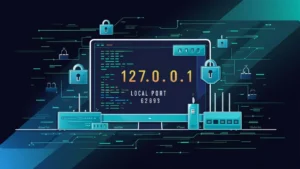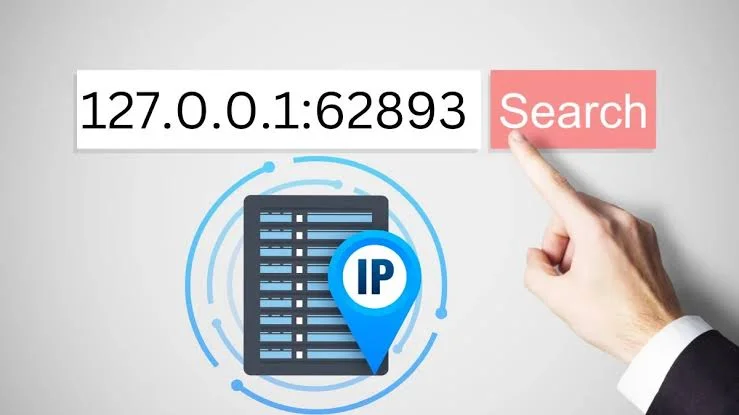Understanding 127.0.0.1: The Localhost Explained
The term “localhost” refers to the local computer that a user is currently working on, essentially serving as a point of reference in networking. In technical terms, localhost is represented by the IP address 127.0.0.1. This specific address functions as a loopback interface, meaning it allows a device to communicate with itself, facilitating various tests and configurations. The significance of localhost cannot be understated; it enables developers to run and test applications on their own machines without the need for external servers.
When applications are being developed, they often need to connect to a network service to function correctly. 127.0.0.1 allows developers to simulate network connections locally without relying on the internet or external networks. This is particularly crucial during the early stages of application development, where frequent testing is required to ensure that code behaves as expected. By utilizing localhost, developers can troubleshoot issues with minimal risk and discover potential bugs in a secure environment.
Moreover, the loopback capabilities provided by 127.0.0.1 not only enhance development efficiency but also play a significant role in network security and configuration. For instance, when configuring web servers or database management systems, developers and administrators can connect using this localhost address to ensure that services are running as intended before deploying them in a live environment. Such local communication enhances performance, as it reduces latency and improves response times, allowing for a better testing framework.
In summary, 127.0.0.1, as the most popular implementation of localhost, plays a vital role in networking and software development. Understanding its function not only aids developers in their workflows but also highlights the importance of localhost in a broader computing context.
Port 62893: What It Is and How It Works
In the realm of computer networking, the concept of ports plays a crucial role as they serve as logical communication endpoints, allowing various applications to establish connections and transfer data. Port 62893 is a non-standard port that can be used by different services for local communication on a specific device, commonly referred to as localhost. Understanding how port 62893 operates is essential for grasping the broader implications of using non-standard ports in networking.
Generally, ports are identified by their numbers, which range from 0 to 65535. The lower range (0-1023) is reserved for well-known services, such as HTTP (port 80) and FTP (port 21). In contrast, port 62893 falls into the range of dynamic or private ports, which are less universally adopted. This opens the door to flexibility for developers and system administrators who seek to run custom applications without interference from standard services.
Port 62893 may be configured to handle requests for various services, depending on the application it’s associated with. For instance, a local web server or a database management system may utilize this port to communicate with clients on the same device, making operations smoother and more efficient. The non-standard designation also implies that explicit configurations might be necessary, enhancing the importance of understanding how to set up and maintain such connections.
Using non-standard ports like 62893 can have implications for security and accessibility. While leveraging custom port configurations may minimize the risk of external attacks, it is vital to ensure proper firewall settings and monitor traffic accordingly. Establishing connections via port 62893 highlights the significance of port management in local networking scenarios, which is critical in maintaining an effective and secure environment for application communication.
Common Uses of 127.0.0.1:62893 in Development and Testing
The address 127.0.0.1:62893 serves as a critical tool in software development and system testing, providing a local environment for developers to efficiently run applications and test functionalities. This loopback address allows for the simulation of network interactions without the need for active internet connections, making it invaluable for various development needs.
One of the primary uses of 127.0.0.1:62893 is in running server applications locally. Developers can host web applications on their machines using this address, enabling them to interact with their code as if it were hosted on a remote server. This fosters a conducive environment for debugging and allows for rapid iteration on features and fixes. For instance, utilizing frameworks such as Node.js or Django with 127.0.0.1:62893 allows developers to serve their applications while maintaining control over the server settings, thus facilitating real-time testing and feedback.
Moreover, 127.0.0.1:62893 is instrumental for testing APIs. By simulating API requests locally, developers can ensure that endpoints respond correctly before deploying them to production. Tools like Postman can be configured to make requests to this address, allowing for comprehensive verification of API functionality, including authentication methods, data handling, and response times without external interference.
Additionally, this address aids in creating isolated environments to simulate network scenarios. For example, developers can use it to test applications’ behavior under various conditions, such as interrupted connections or mock failures, without disrupting ongoing projects. Tools such as Docker and Vagrant utilize 127.0.0.1:62893 to manage environments and services seamlessly, enhancing collaborative efforts in debugging.
In conclusion, 127.0.0.1:62893 plays a vital role in development and testing workflows, enabling developers to run server applications, validate APIs, and simulate diverse network environments, all within a controlled and efficient local setting.
Troubleshooting Issues with 127.0.0.1:62893
Working with the localhost address 127.0.0.1:62893 can sometimes lead to various challenges. Users might encounter connectivity issues that detract from the overall experience. One common scenario occurs when applications fail to connect to this specific port on the localhost due to firewall restrictions or incorrect application settings. It is essential to ensure that any security software is configured to allow traffic through port 62893, as default settings often block unknown connections.
Another frequent issue is related to misconfigurations in the server settings. Users might inadvertently change the default listen address or port number in the application configuration files, leading to an inability to connect to 127.0.0.1:62893. Double-checking configuration files and restoring them to their original state can often resolve these types of errors. Additionally, a quick examination of logs can provide valuable insights into what might be causing the connection woes, whether it is permission errors, service failures, or configuration mismatches.

If users still face trouble, restarting the application, or even the server itself, can sometimes rectify transient issues that hamper connectivity. In cases where services running on localhost become unresponsive, a complete restart can refresh the operating environment. Moreover, using diagnostic tools such as ping or telnet can help determine if the port is active and accepting connections. These tools provide essential feedback on the network state, making them indispensable in troubleshooting localization issues.
In conclusion, understanding and addressing common issues associated with 127.0.0.1:62893 entails a combination of verifying configurations, ensuring appropriate firewall settings, and utilizing diagnostic tools. By implementing these best practices, users can enhance their management of localhost connections and mitigate potential connectivity challenges effectively.
You May Also Read
